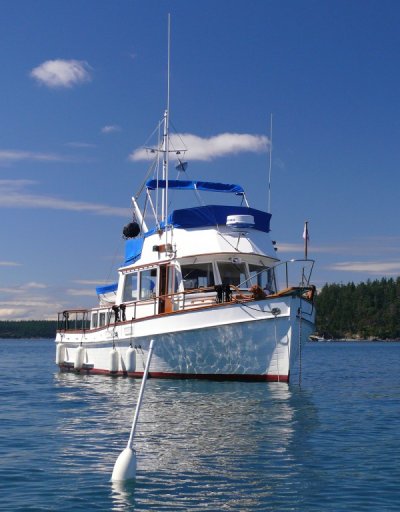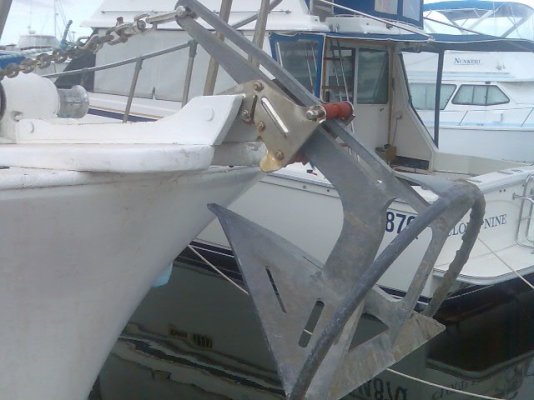skipperdude wrote:
When stored in a bow locker, chain adds a lot of weight in the last place you want it, at the forward extremity of the boat.
In light winds an all chain rode produces a catenary to provide a perfectly horizontal pull. In a 25 to 30 knt wind chain will straighten out and become taut.
Even in light winds if a swell developes an all chain rode can transmit via dynamic shock loads a serious jolt and tugs on the anchor and the deck hardware.
These are the three items in your post I'll comment on.* While there's no question an all-chain rode is considerably heavier than a combination rode, whether or not this weight has any effect on the trim of a boat depends on the boat's design.* In a GB36, 200-300 feet of chain (we use 200' of*3/8 chain) doesn't seem to effect the trim of the boat at all.* We've had it off the boat a few times for marking or cleaning*and the waterline at the bow, while it obviously has to be different, was not different enough to be obvious.
But a boat like Carey's lobsterboat is much more sensitive to trim than our GB of the same length, plus his boat is a planing boat (if he wants to push it that fast).* So weight in his bow is far more critical than in ours.* SO an all-chain rode up in the bow could be detrimental to his boat's performance, which is why he uses a "sort-of" combination rode with some 80 or 90 feet of chain and the rest nylon.
Chain, unless it's too light for the windage of the boat, should not straighten out under a*30 knot wind.* This is about the maximum wind strength we've anchored in so far, and with 170' of chain out in about 25 feet of water, there was still a lot of catenary left in the chain.* And that was with two boats hanging on our anchor (the other one was a*sailboat however--- not so much windage as ours).* I suppose if one had a very short scope out 30 knots of wind might almost straighten it out, but one probably wouldn't have*this short of a*scope out if the wind picked up like that.
Again, there are a lot of varables--- windage of the boat, strength of the wind, size of the chain, amount of chain out, depth of the water, etc.* So it's very hard to come up with a hard and fast rule about how a particular rode will act.* Most powerboaters I know in the PNW, and a few sailboaters if their boats are large enough to accomodate the weight, use all-chain rode.* Some anchor manufacturers like Rocna recommend using all-chain rode with their anchors although that does not mean they won't perform well with a combination rode.
We have anchored in conditons when the bow was pitching up and down, sometimes rather violently,*and there was no shock whatsoever transmitted to the boat with our all-chain rode.* The catenary acted as as shock absorber plus we have the snubber bridle to act as an additional shock absorber.* Plus we let out a very long loop of slack chain between the bow roller and the chain grab plate the snubbers are attached to.* The result is a lot of weight the boat has to pick up as it pitches and this dampens out any shock.* We get far more shock transmitted to the boat when we're tied up to a park dock and there are waves coming into the bay.
-- Edited by Marin on Monday 12th of April 2010 06:43:41 PM

